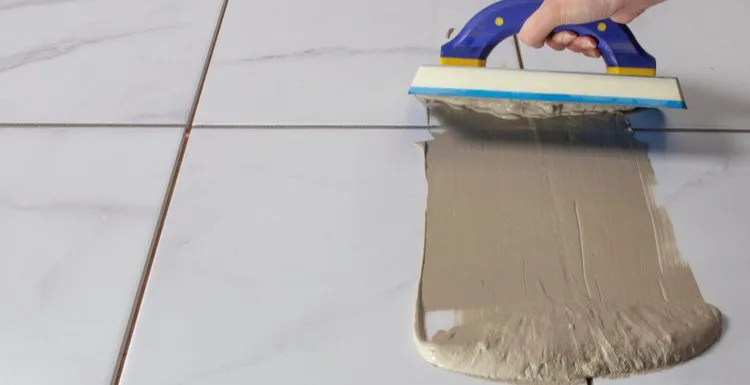If you’re a DIY homeowner or a contractor, you most likely work with grout on a regular basis. But for the rest of us, it’s important to know just how important grout is.
This mixture fills the spaces between tiles, keeping them secure in place. It ensures that debris won’t enter the spaces, but it’s also highly visible.
As such, it’s both a functional element and a style element. Grout also comes in two types: sanded vs. unsanded grout. Which one should you use for your bathroom or kitchen makeover? In this article, we’ll cover:
- The comparison between sanded and unsanded grout
- Their pros and cons
- Which one you should use?
- Frequently asked questions about grout
Sanded vs. Unsanded Grout
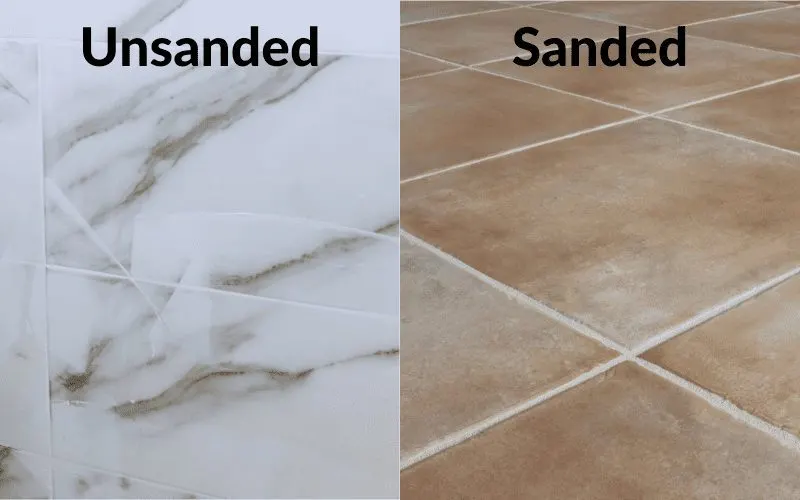
Marcie C Fields/Ungvar/Shutterstock
Sanded and unsanded grout may not seem different. After all, they’re both grouts, right? Wrong!
Picking the wrong one can really throw off the look of your project. Below, we’ve listed 5 major differences and considerations.
1. Thickness and Durability
As its name suggests, sanded grout is grout with sand added. Unsanded grout, on the other hand, has no sand material. It’s also referred to as non-sanded grout. Sanded grout is thicker and more durable than unsanded grout because it holds up against shrinkage.
Sand particles hold the grout together and become suspended as the grout sets, resulting in less shrinkage. The sand is locked as the grout cures and doesn’t move, even after drying. This results in increased stability and durability.
Because sand particles are not present in unsanded grouts, they end up shrinking. Additionally, sanded grout is highly resistant to cracking.
While unsanded grout can be prone to cracking when pressure is applied, sanded grout doesn’t, making it an ideal option for flooring applications.
Due to its ability to handle pressure, it’s best for areas with high foot traffic. So, next time you renovate your bathroom or living room flooring, make sure you get high-quality sanded grout for a perfect outcome.
2. Tile Joints and Vertical Surfaces
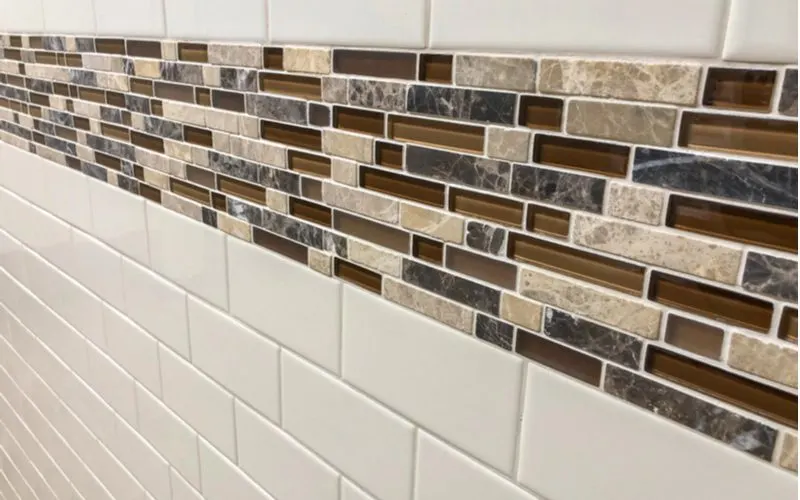
StudioDin/Shutterstock
Because sanded grout shrinks less and bonds better, it’s best suited for tile joints between 1/8″ and 1/2″ thick. If you try to fit the bulkier sanded grout into a thinner joint (less than 1/8 inch), the tiles will likely crack, and the results are messy.
Additionally, you risk developing pinholes. If you’re using sanded grout in a thin joint, you might require more water in the base to make it thinner and more consistent. When you use excess water, it evaporates over time, leaving air spaces.
The grout above these spaces then collapses, causing pin-like holes. For tile joints, less than 1/8″, use unsanded grout. Its thin and smooth texture makes it an excellent option for thin joints and vertical surfaces.
Vertical tile lines are usually between 1/6″ to 1/8.” Since unsanded grout is also extremely sticky, it works well when installing vertical surfaces. Additionally, since there’s no foot traffic on these surfaces, durability isn’t a significant issue.
For joints 3/8″ or larger, you’ll need a “wide-joint mixture” grout. It contains large aggregate particles that reduce shrinkage further, making it perfect for projects with large joints.
3. Cost
Cost is another significant difference between the two main types of grout. Unsanded grout is much more expensive than sanded grout because cement costs more than sand.
Also, more costly polymers are added to unsanded grout to form the final content, significantly raising the cost. Sanded grout mainly consists of sand, which is very cheap.
4. Tile Type
Sanded grout scratches the surface. It contains harsh and rough aggregates that can damage soft materials such as limestone, marble, and granite.
If you’re not worried about damaging the surface or you’re using hard materials that the sand cannot easily damage, choose sanded grout. Materials such as rustic tiles and a matte finish work well with this type.
Additionally, it’s suitable if you’re installing tiles for the first time in your home. For soft surfaces or glossy ones like porcelain or ceramic, use unsanded grout. It won’t scratch the surfaces, as it doesn’t have abrasive properties.
5. Appearance and Colors
Sanded grout is rough with large sand aggregates, giving it tensile strength. On the other hand, unsanded is a mixture of polymers, portland cement, powdered pigments, and water. It has a smooth texture and consistency.
The most common grout colors are gray and beige. However, there are other pigmentations available, such as deep green, blue, and brown.
While picking grout colors, you can opt for:
- Colors that match your tile color
- Neutral colors to complement tile design
- Bold colors that contrast your tile color
You can also opt for sealed cement-based grout and then color it after curing. However, it’s a long and tedious process. It’s better to pick the right color upfront. Since you have to clean unsanded grout with water after curing, the water washes away some of the pigment.
Both types of grout also appear lighter after drying. But unlike unsanded grout, sanded grout’s final color appears closer to the color chart. For this reason, you can pick a darker color than your desired one so that, after drying, it’ll get lighter to almost your preferred color.
Sanded Grout Pros and Cons
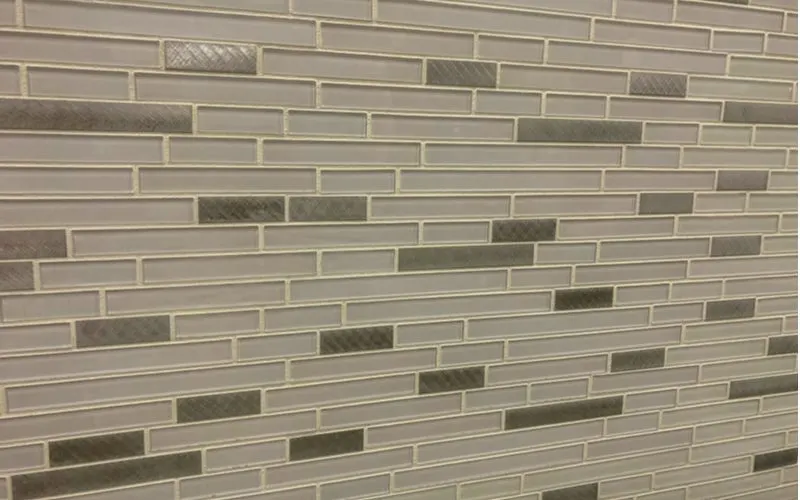
StudioDin/Shutterstock
Pros
- Cheaper
- Best for thick joints
- Wide color choice
- Prevents cracking and shrinkage
Cons
- Can scratch soft and glossy surfaces
- Causes pinholes and cracking when used in thin tile joints
- Requires sealing with a water-based sealant to improve permeability
Unsanded Grout Pros and Cons
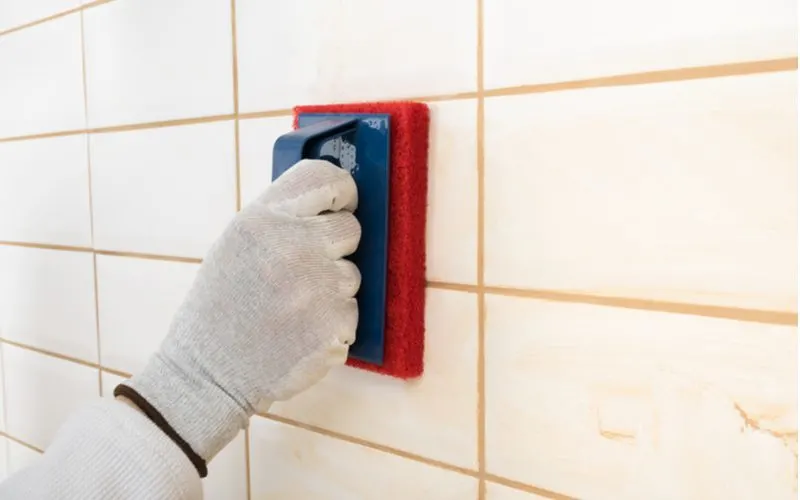
Aleksey Kurguzov/Shutterstock
Pros
- Best for joints less than 1/8″
- Suitable for vertical surface installations
- Smooth texture
- Does not scratch soft or sensitive surfaces
- Some applications don’t require grout sealing
Cons
- Pricey compared to sanded grout
- Few color choices
- Not suitable for thick joints
Which Grout Should You Use?
The best grout will depend on your project. If you’re installing a floor surface in an area with high foot traffic, sanded grout can withstand the pressure. But if it’s a vertical surface like a bathroom, use unsanded grout.
This type of grout is also non-porous, making it ideal for areas with high humidity and moisture, such as kitchens and bathrooms. The spaces between the tiles can also indicate the grout to use.
For areas less than 1/8″, use unsanded grout, and sanded grout for those between 1/8″ and 1/2″. If the space is 3/8″ or more, go for a wide-joint mixture of grout. Also, ensure you seal the grout to prevent it from attracting water, bacteria, and dirt.
Frequently Asked Questions
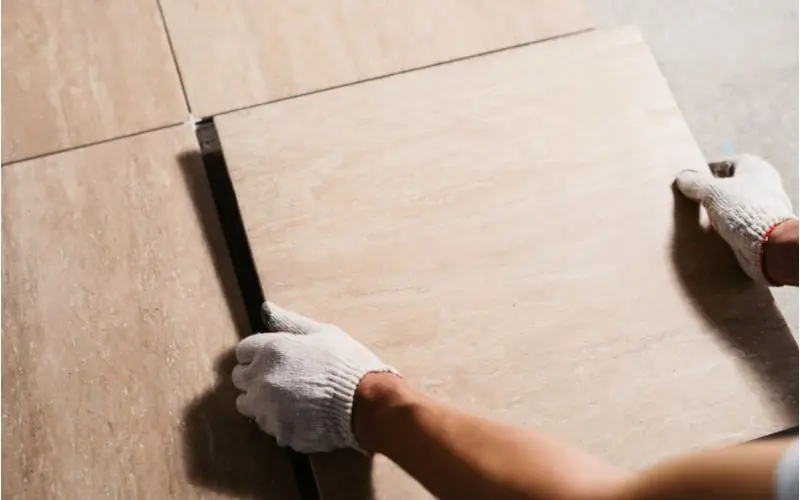
ANRproduction/Shutterstock
Which dries faster, sanded or unsanded grout?
Grout takes 48-72 hours to dry after application. However, it might take longer if it comes into contact with moisture, such as in bathrooms or outdoors when it's raining. Both sanded and unsanded grout have an average drying time of 72 hours or longer when exposed to moisture.
Should I use sanded or unsanded grout for the backsplash?
You should use unsanded grout. A backslash is a vertical surface. Since vertical surface installations don’t require strength to withstand the pressure of foot traffic, they can handle the lesser durability of unsanded grout. Additionally, the backsplash has tile joints less than 1/8″, making unsanded grout the best option. This will help avoid pinholes.
Can you put unsanded grout on top of sanded grout?
Unfortunately, you cannot directly apply unsanded grout on top of the grout already there unless there is enough depth. If there isn’t, you’ll first need to remove the grout already applied and then apply the new one.
To do this, use a thin blade like a plexiglass cutter. A grout removal blade can be thick and scratch the edges of your tiles. Run the thin blade in the grooves until it’s all out, then wipe it down and apply sanded grout.
Is premixed grout any good?
Premixed grout comes ready, and you only need to open the bucket and start grouting. It saves you the installation time. Additionally, every bucket has the same color.
So, if you’re looking to achieve color consistency, premixed grout can help. The downside to this grout is that it comes at an additional cost to make up for the convenience and time it saves you.
Can I use sanded grout on small joints?
The sanded grout is ideal for joints with a minimum width of 1/8″. For smaller joints, you should use unsanded grout. Sanded grout is bulkier and has large sand particles. Using it on joints smaller than 1/8″ can make them crack.
You’ll also have to use more water to make a thinner consistency. This water evaporates over a long time, leaving air spaces. Grout above these spaces collapse, thus forming pinholes.
Does sanded grout need to be sealed?
Yes, you should seal the grout. Sanded grout is a mixture of sand and cement and, therefore, porous. It attracts dirt, oils, water, mildew, and bacteria. Even though the tile industry does not require sealing, it’s recommended, especially for wet areas and high traffic.
What happens if you don’t seal grout?
If you don’t seal the grout, it will attract dirt, water, mold, and bacteria. Your tiled walls will be moldy with dirt sticking on them. Sealing the grout makes it waterproof and repels germs. It also helps prolong the grout’s look, consistency, and texture.
How do you tell if your grout is sealed?
One way to tell if your grout is sealed is by spreading drops of water on it. If the tiles or grout change color or darken, they are probably not sealed. But if nothing changes, they most likely have been sealed.
Can you mix sanded and unsanded grout?
What if you want to gain the advantages of both? Can you mix sanded and unsanded grout? Yes, you can mix sanded and unsanded grout to make your project durable. Pour a little sand into unsanded grout and mix it.
This will make it more durable, and since the ratio of aggregates is now high, there’ll be less shrinkage when it cures. Additionally, unless you want to mess up your final grout colors, you should only mix grout of the same color in case your grout finishes when you’re renovating.
Sanded vs. Unsanded Grout: Which to Use?
If you’re debating using sanded vs. unsanded grout, choose the one that best fits your project. Consider the tile joint width, the type of floor installation, and how durable you want the floor to be, as well as the pros and cons of each grout.
However, even if sanded grout is more durable than unsanded grout, you can’t use it in smaller joints. Your project is the major determinant of which to use.

